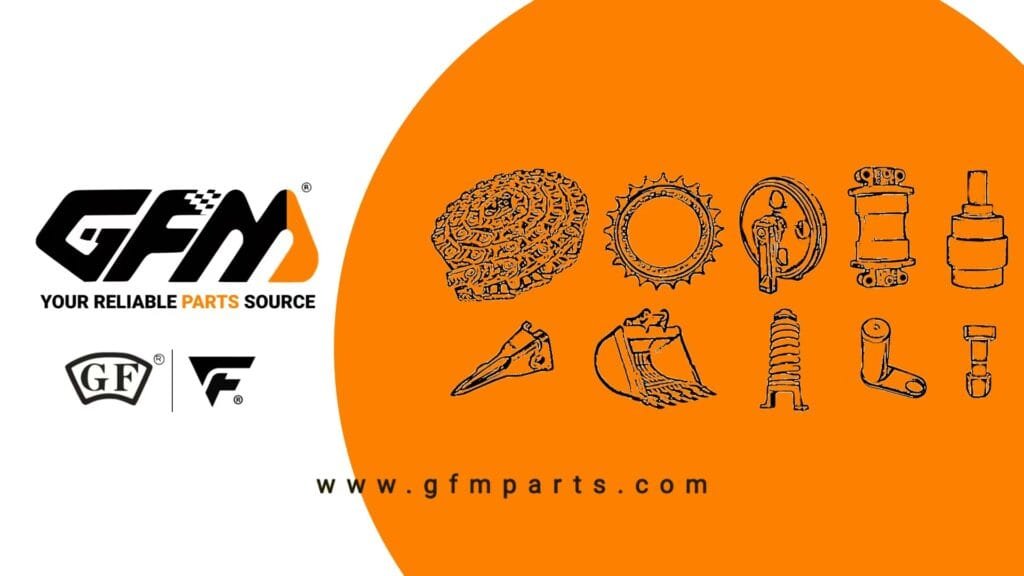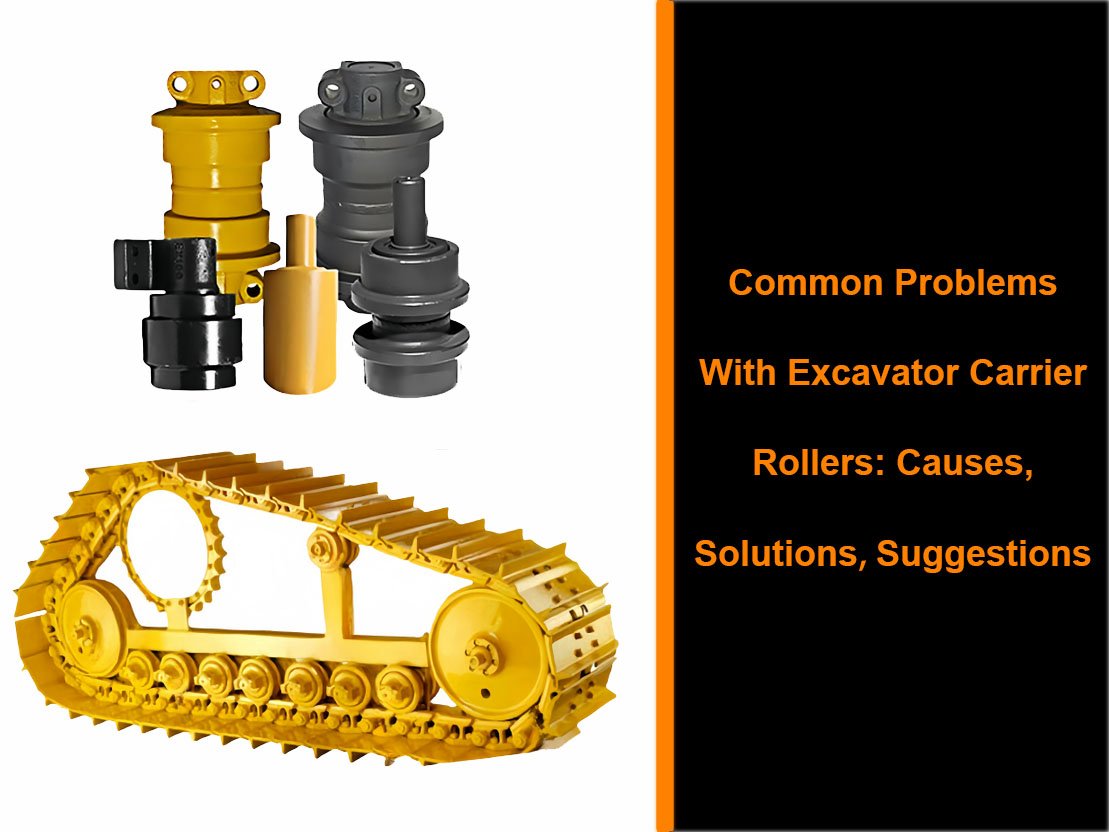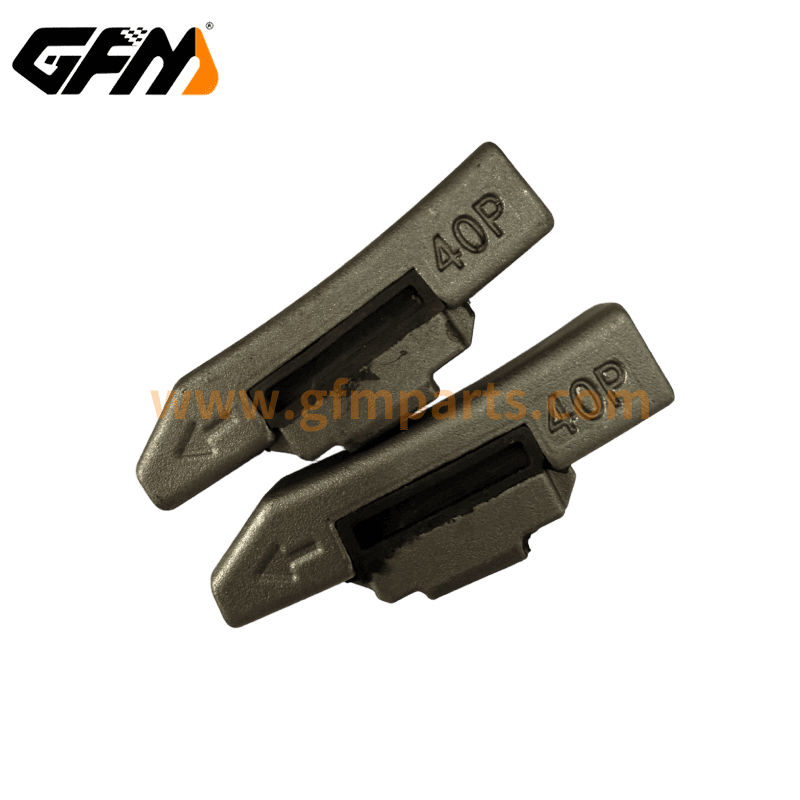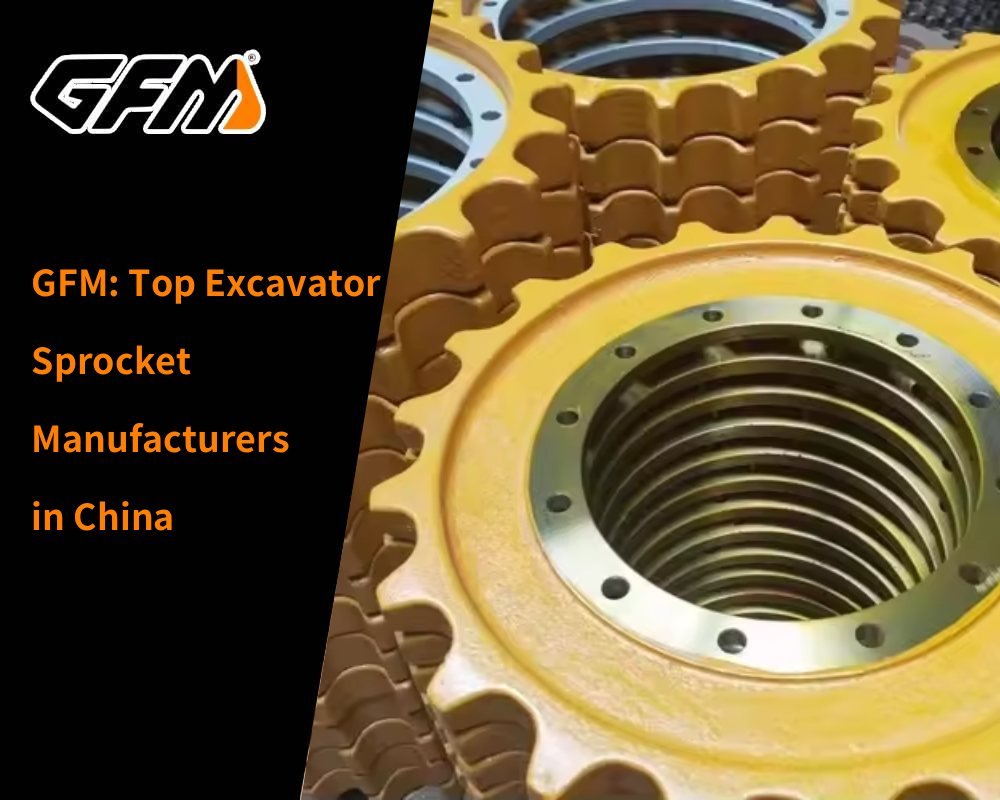The carrier roller of the excavator is an important part of the excavator track system. Its main function is to support the weight of the track and ensure the smooth operation of the track. However, during long-term use, the carrier roller may have some problems, affecting the performance and service life of the excavator. Understanding the causes of these problems, how to deal with them, and daily maintenance measures are essential to ensure the good operation of the excavator.
Common problems with excavator carrier rollers
Carrier roller wears too fast
Carrier roller wear is one of the most common problems. Long-term high-intensity use, uneven ground or tight track will cause the surface wear of the carrier roller to increase, affecting the stability of the track.
Carrier roller falls off or is damaged
The carrier roller may fall off or be damaged due to impact, aging or loosening of the fixing bolts. This will not only affect the operation of the track, but may even cause serious mechanical failure.
Carrier roller deformation
If the carrier roller is subjected to overload or excessive vibration for a long time, it may be deformed. Deformed carrier rollers will cause the track to run unsteadily and accelerate the wear of other parts.
Wheel jam
If there are debris such as mud, stones, etc. between the wheel and the track system, the wheel may be jammed, affecting the normal operation of the track. This usually causes the track to be inflexible or even unable to move.
Insufficient lubrication or leakage
The inside of the wheel needs to be lubricated regularly to keep it running smoothly. If the lubricating oil is insufficient or there is a problem with the lubrication system, the friction coefficient of the wheel increases, which can easily cause damage to parts.
Statistics of common fault types
| Fault type | Percentage | High-incidence equipment model |
| Abnormal wear | 42% | 20-30 ton models |
| Bearing damage | 28% | Mining equipment |
| Seal failure | 19% | Wet environment equipment |
| Structural fracture | 11% | Overloaded equipment |
The main cause of the problem
Harsh working environment
Excavators often work in muddy, sandy or mountainous environments, which put great pressure on the wheel and easily cause damage and wear to the wheel.
Excessive load
Long-term overload operation will accelerate the wear of the wheel, especially during high-intensity operations, when the pressure on the wheel exceeds the designed load-bearing capacity.
Lack of regular maintenance
The wheel of the excavator needs regular inspection and maintenance. If maintenance is neglected, insufficient lubrication or loose parts can easily lead to failures.
Improper operation
Improper driving habits, such as frequent sudden acceleration and braking, or operating on uneven ground, may increase the wear and damage of the rollers.
How to deal with carrier roller failures
Regularly check and replace rollers
Check the rollers regularly to detect wear, cracks or deformation problems in time. If the rollers are seriously damaged, they should be replaced in time to avoid greater mechanical failures.
Repair deformed rollers
If the rollers are found to be slightly deformed, they can be restored to normal use through repair measures. However, if the deformation is serious, it is recommended to replace them with new rollers directly.
Clean up stuck objects
Regularly clean up the debris between the rollers and the track to prevent stuck. You can use special tools to clean them to keep the rollers running smoothly.
Lubricate the rollers
Regularly add lubricating oil to the rollers according to the manufacturer’s recommendations to ensure the normal operation of the lubrication system. Check the quality of the lubricating oil to prevent leakage and expired use.
Check and tighten the bolts
Check the looseness of the fixing bolts of the rollers frequently to ensure that they are well tightened. Loose bolts can cause the roller to fall off or move, or even cause greater mechanical problems.

How to prevent top roller problems
Ensure appropriate operating load
Ensure that the excavator is not overloaded. Reasonably control the operating intensity and avoid using it under overload or high impact conditions.
Regular maintenance and maintenance
Regularly check the various components of the roller and track system, clean and lubricate them in time, and replace worn parts.
Avoid improper operation
When operating the excavator, avoid sudden braking, sudden acceleration and other operations, and avoid running on uneven ground for a long time.
Choose the right roller material
Choose a high-quality roller, which can better resist wear and extend the service life.
Maintain the working environment
In a working environment with a lot of mud and sand, use appropriate protective measures to prevent too much debris from entering the roller system.
Seasonal maintenance focus
| Season | Maintenance points |
| Rainy season | Increase the frequency of drainage trough inspection and apply 3M anti-rust wax on the sealing surface |
| Winter | Use low-temperature grease (-30℃ applicable model) |
| Sandstorm season | Install dust cover and shorten the cleaning cycle to 15 days |
| Get a quick free quote | Email: henry@gfmparts.com | Whatsapp: +86 17705953659 |
As a key component of the track system, the excavator carrier roller often affects the working efficiency and service life of the entire machine when problems occur. Through regular inspection, timely maintenance, reasonable operation and effective maintenance, the incidence of roller failure can be significantly reduced to ensure the efficient operation of the excavator. If you have any questions about the carrier roller or need replacement parts, please contact us and we will provide you with professional services and high-quality accessories.








